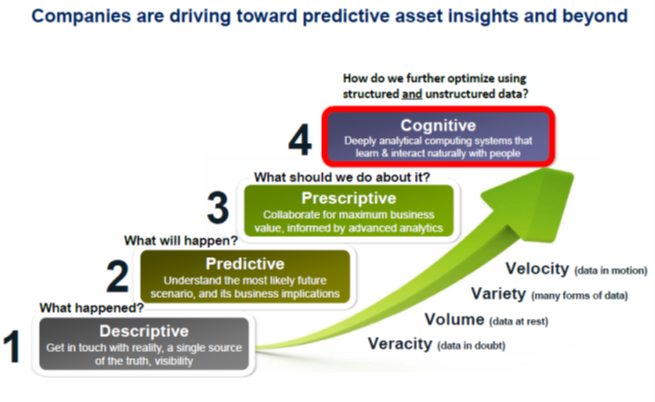

At the recent ARC India Forum, Mitsubishi Electric and IBM highlighted the strategy behind the close collaboration between the two suppliers and the concept of "cognitive manufacturing". Speakers from both companies pointed out that, when technology suppliers coordinate their development efforts with each other, the resulting technology convergence is more agile and can often cater to a broader customer base. Ultimately, these types of alliances can benefit the customer as competence levels rise through knowledge sharing and enhanced capabilities.
Anil Bhise, Senior Manager, Product Marketing, Mitsubishi Electric India and Vineet Nayyar, Cluster Leader for Industrial Sector for North & East India and Leads Electronics Industry for IBM India, spoke about digital operations in manufacturing; stressing the importance of an open platform to support live analytics and decision making and provided statistics to substantiate this claim.

Manufacturing operations and linkages are expanding, said Mr. Bhise. He showed how a condition monitoring system provides an early detection system to identify excessive vibrations/noise/humidity etc. These faults are time sensitive and the earlier you analyze and take care of the faults the better the result, he said.
Although CMSs have been around for many years, the rise of IIoT and Industrie 4.0 have provided new monitoring options, plus analytics to put data in context with a given situation to provide better insight for intelligent action. The decision-making matrix for equipment is extremely complex with different permutations and results, he said. Taking the right decision out of multiple possibilities for a machine equipped with only a local controller is a challenge. Therefore, an edge computing layer is needed to aid with the decisions. The FA-IT platform enables connectivity between factory shop floors and value chains via IoT systems for collecting, analyzing, and utilizing data for smart manufacturing.
When Mr. Nayyar of IBM joined him on stage, he said that manufacturing companies must be aware about where they are on the digital journey and the current maturity model. Industry is structured in four layers: descriptive, predictive, prescriptive, and cognitive. And each step is moving in tandem with the four Vs – veracity (data in doubt), volume (data at rest), variety (many forms of data), and velocity (data in motion). The graphic provided illustrates this concept.
Relative to cognitive manufacturing, Mr. Nayyar said that it leverages current manufacturing technologies such as the IIoT, analytics, robotics, and mobility to improve plant efficiency. It also creates new interactions between humans and machines. This leads to cognitive factories characterized by networks of smart operations and facilities across their value chain. Cognitive factories gather the data, recognize patterns, apply advanced analytics, and infuse continuous intelligence into machine learning and other functions.
According to Mr. Nayyar, manufacturing analytics focuses on driving improved performance and value to these manufacturing operations:

